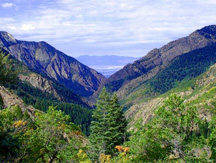The History of Cottonwood Heights’ Amazing Success
The success of both the Old Mill Office Park along with Fort Union’s big box stores and strip malls, enabled Cottonwood Heights to break from the County and become an autonomous city. The Old Mill area would never have succeeded had it not been for two very important state and county funded projects: the I-215 corridor and the county’s Old Mill Golf Course. When Cottonwood Heights then broke ties with the county for most municipal services, the state and county’s investment returns were never fully realized. Yet Cottonwood Heights’ incorporation is legal under state and county laws.
 When one town or municipality is flush with revenue, residents should have a right to “control their own destiny,” as Mayor Cullimore puts it. But Utah township laws place limits on towns controlling the purse strings of the area-generated revenue. This could change. Cullimore believes that the Wasatch Front should consist of “wall-to-wall cities.” This vision of making a suburb a city is at odds with the makeup of a suburban district.
When one town or municipality is flush with revenue, residents should have a right to “control their own destiny,” as Mayor Cullimore puts it. But Utah township laws place limits on towns controlling the purse strings of the area-generated revenue. This could change. Cullimore believes that the Wasatch Front should consist of “wall-to-wall cities.” This vision of making a suburb a city is at odds with the makeup of a suburban district.
Cottonwood Heights has at least three distinct areas: the Old Mill office complex, the Fort Union big boxes and strip malls, and the mouth of the canyons businesses and offices. These areas have different interests and characters, and are now only bound together because they are drawn within the boundaries called “Cottonwood Heights.”
The business owners naturally want to maintain their unique locally owned, locally strong identity. Cullimore, who operates a corporate, multi-national medical products manufacturing business, works out of the strip-mall and big-box area of Cottonwood Heights. He believes he understands the interests of local business owners and wants them to join his team. Naturally, they are suspicious of the new mayor, who has flexed his muscle by demonstrating to them that they reside in a DUI problem area. Lani Roberts who owns the 7-Eleven said, “The mayor has never set foot in my store, nor introduced himself…He has told me to tell 7-11 they should sell to the City.”
Mayor Cullimore acknowledges that the “community identity” of Cottonwood Heights is important. The model of the new suburban city doesn’t address these concerns as well as the county with townships. Certainly changes need to made to this model empowering townships to have greater representation in county government, but “wall-to-wall cities” is not the answer.
The Wasatch Front is expected to double in size in the next twenty years. Decisions made now will greatly impact the future cities and towns we inhabit. If we allow the status quo to continue we can expect more big-boxes and corporations receiving corporate welfare and big developers working with city leaders to reap the greatest rewards at the expense of strong local businesses and authentic communities.





